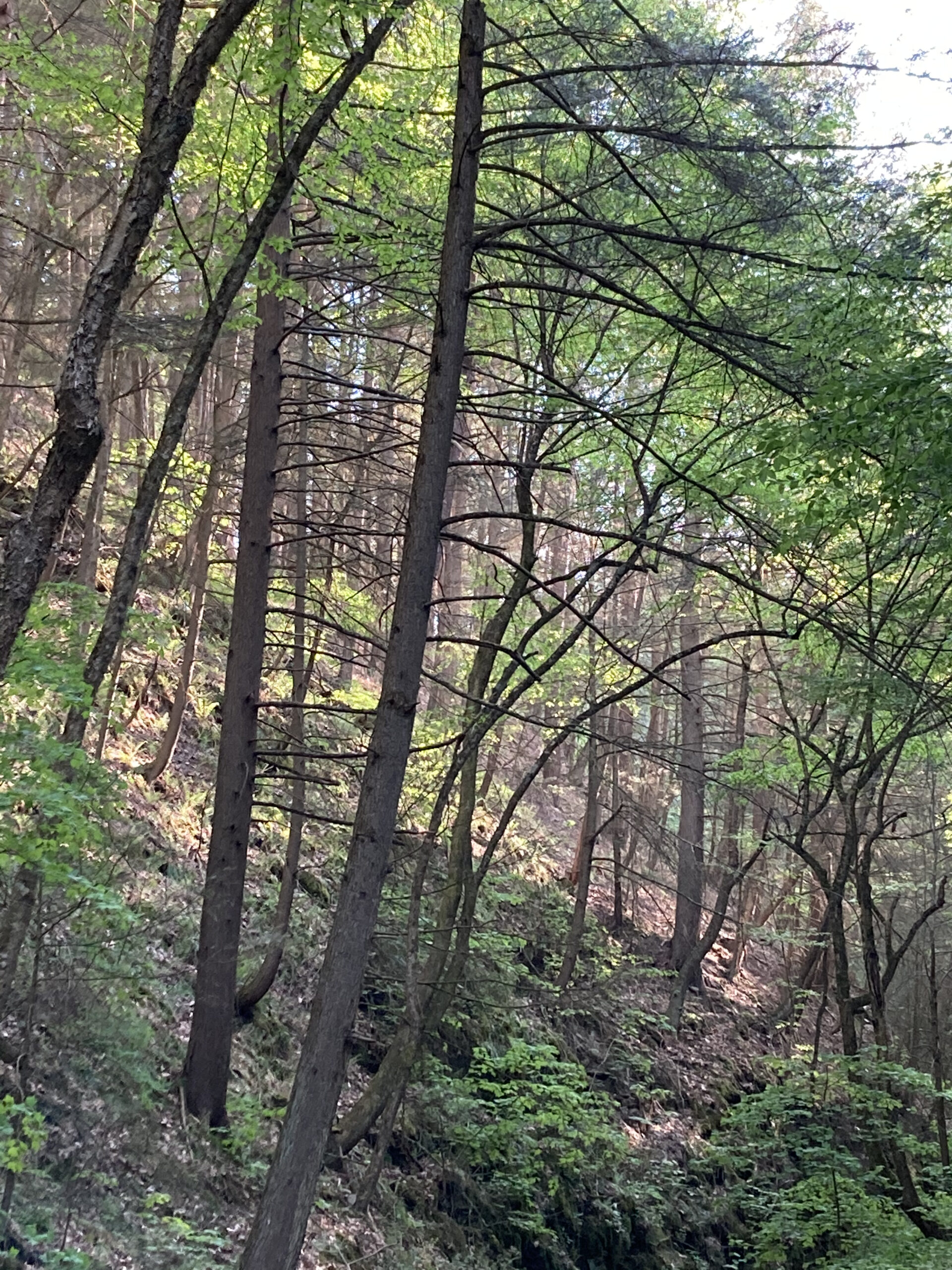It all started one night after getting totally engrossed in viewing Japanese woodblock prints, particularly the night scenes by Kawase Hasui. Hasui was one of Japan’s most prominent and prolific printmakers who died in 1957. He created landscapes that beautifully merged humans⎼ their homes, boats, shrines, castles, and temples⎼ into the land around them.
I was looking through several paintings and when one stood out, I’d wonder why that was so. I’d imagine myself in the depicted scene or sit with the mood the print and my seeing of the print created.
One night scene was of the Chuson-ji Temple, in the town of Hiraizumi, Japan. A long series of wide steps leads up through trees to the temple. There is moonlight and a bright star, but no moon. I allowed myself to slow down, stop rushing, and just linger on the scene, to sort of let my eyes feel the steps so I could walk up them and reach the building itself.
Then I’d close my eyes and let the scene rest inside me, before opening them again to allow whatever new details I had noticed enter the picture. By touching in this mindful way, we are touched; we feel what we see. The artwork has more dimension. I learned this practice at a retreat organized by psychotherapist Lawrence Leshan, and by The Zen of Seeing: Seeing/Drawing as Meditation, by Frederick Franck.
After doing this for a few hours, I drove into town to buy groceries. Along the way, the scenery took on a totally new quality. The homes surrounded by trees, the lights amidst the dark, the moon over the hillside⎼ one minute, the scene around me was the physical road and trees. The next, a beautiful portrait of the same.
A few days later, in the daytime, a similar experience occurred. As I walked up the rural road where I live, I saw as I might normally see⎼ light breaking through the hillside forest roof and bouncing off the leaves of the trees ⎼ and then as Hasui might paint it. By viewing the art, my eyes were tuned to beauty; I now had two sets of eyes, two ways of seeing.
Hasui seemed fascinated with how not just art was a creation, but vision itself. He was almost too prolific. He painted the same scene in different times of day and different seasons. There are at least three renditions of the Chuson-ji Temple, for example⎼ one at night, one on a spring day, another in the snow. But what we see in each painting is one moment; we see each instant as a once in a lifetime event.
We can see how everything changes or is change itself. Henri Bergson, a French philosopher, said: “Reality is flowing. This does not mean that everything moves, changes, and becomes; science and common experience tell us that. It means movement, becoming, change is everything there is, there is nothing else. There are no things that move and change and become; everything is movement, is change.”
The beautiful red temples Hasui painted were not just an external scene he perceived but an element of the artist, his history and mood, the time of day, the weather and quality of light, the remnants of the past in the present. We are not a being locked in a wall of skin, but one movement in a universe dancing itself into being….
**To see the whole article, please go to The Good Men Project.

